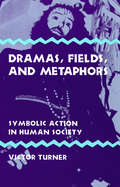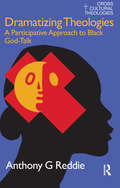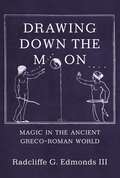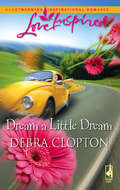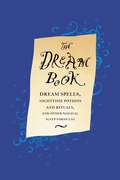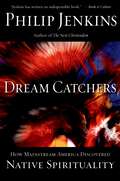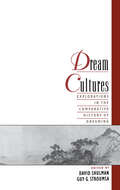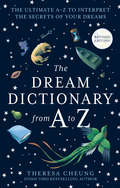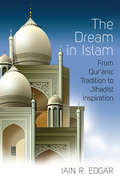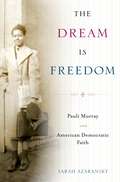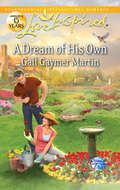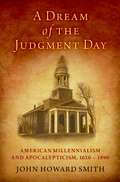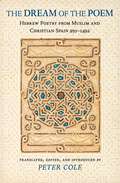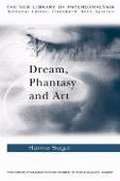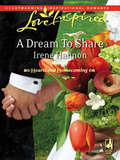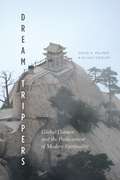- Table View
- List View
Dramas, Fields, and Metaphors: Symbolic Action in Human Society (Symbol, Myth and Ritual)
by Victor TurnerIn this book, Victor Turner is concerned with various kinds of social actions and how they relate to, and come to acquire meaning through, metaphors and paradigms in their actors' minds; how in certain circumstances new forms, new metaphors, new paradigms are generated. To describe and clarify these processes, he ranges widely in history and geography: from ancient society through the medieval period to modern revolutions, and over India, Africa, Europe, China, and Meso-America.Two chapters, which illustrate religious paradigms and political action, explore in detail the confrontation between Henry II and Thomas Becket and between Hidalgo, the Mexican liberator, and his former friends. Other essays deal with long-term religious processes, such as the Christian pilgrimage in Europe and the emergence of anti-caste movements in India. Finally, he directs his attention to other social phenomena such as transitional and marginal groups, hippies, and dissident religious sects, showing that in the very process of dying they give rise to new forms of social structure or revitalized versions of the old order.
Dramatizing Theologies: A Participative Approach to Black God-Talk
by Anthony G. ReddieBlack theology has flourished within the academy. Its theories, however, have not always translated into practical use for Black people. 'Dramatizing Theologies' outlines the strong practical dimension of Black theology. Combining Black theology with dramatic, dialogical sketch material, the book produces an accessible approach to Black theological dialogue. The chasm between the academy, church and grassroots communities is overcome through the use of drama. 'Dramatizing Theologies' offers a unique methodology for Black theological conversation with the poor, marginalized and disenfranchised.
Dramatizing Theologies: A Participative Approach to Black God-Talk (Cross Cultural Theologies Ser.)
by Anthony G. ReddieBlack theology has flourished within the academy. Its theories, however, have not always translated into practical use for Black people. 'Dramatizing Theologies' outlines the strong practical dimension of Black theology. Combining Black theology with dramatic, dialogical sketch material, the book produces an accessible approach to Black theological dialogue. The chasm between the academy, church and grassroots communities is overcome through the use of drama. 'Dramatizing Theologies' offers a unique methodology for Black theological conversation with the poor, marginalized and disenfranchised.
Drawing Down the Moon: Magic in the Ancient Greco-Roman World
by III Radcliffe G. Edmonds IIIAn unparalleled exploration of magic in the Greco-Roman worldWhat did magic mean to the people of ancient Greece and Rome? How did Greeks and Romans not only imagine what magic could do, but also use it to try to influence the world around them? In Drawing Down the Moon, Radcliffe Edmonds, one of the foremost experts on magic, religion, and the occult in the ancient world, provides the most comprehensive account of the varieties of phenomena labeled as magic in classical antiquity. Exploring why certain practices, images, and ideas were labeled as “magic” and set apart from “normal” kinds of practices, Edmonds gives insight into the shifting ideas of religion and the divine in the ancient past and in the later Western tradition.Using fresh approaches to the history of religions and the social contexts in which magic was exercised, Edmonds delves into the archaeological record and classical literary traditions to examine images of witches, ghosts, and demons as well as the fantastic powers of metamorphosis, erotic attraction, and reversals of nature, such as the famous trick of drawing down the moon. From prayer and divination to astrology and alchemy, Edmonds journeys through all manner of ancient magical rituals and paraphernalia—ancient tablets, spell books, bindings and curses, love charms and healing potions, and amulets and talismans. He considers the ways in which the Greco-Roman discourse of magic was formed amid the cultures of the ancient Mediterranean, including Egypt and the Near East.An investigation of the mystical and marvelous, Drawing Down the Moon offers an unparalleled record of the origins, nature, and functions of ancient magic.
Dream a Little Dream (Mills And Boon Love Inspired Ser. #4)
by Debra CloptonExtra, Extra: Wedding-Ready Rancher!
The Dream Book: Dream Spells, Nighttime Potions and Rituals, and Other Magical Sleep Formulas
by Gillian KempFrom the author of the popular Fortune-Telling Book comes a beautifully illustrated primer that opens the secret world of dreams and imparts her magic to dreamers everywhere. Full color.
Dream Catchers: How Mainstream America Discovered Native Spirituality
by Philip JenkinsIn books such as Mystics and Messiahs, Hidden Gospels, and The Next Christendom, Philip Jenkins has established himself as a leading commentator on religion and society. Now, in Dream Catchers, Jenkins offers a brilliant account of the changing mainstream attitudes towards Native American spirituality, once seen as degraded spectacle, now hailed as New Age salvation. Jenkins charts this remarkable change by highlighting the complex history of white American attitudes towards Native religions, considering everything from the 19th-century American obsession with "Hebrew Indians" and Lost Tribes, to the early 20th-century cult of the Maya as bearers of the wisdom of ancient Atlantis. He looks at the popularity of the Carlos Castaneda books, the writings of Lynn Andrews and Frank Waters, and explores New Age paraphernalia including dream-catchers, crystals, medicine bags, and Native-themed Tarot cards. He also examines the controversial New Age appropriation of Native sacred places and notes that many "white indians" see mainstream society as religiously empty. An engrossing account of our changing attitudes towards Native spirituality, Dream Catchers offers a fascinating introduction to one of the more interesting aspects of contemporary American religion.
Dream Cultures: Explorations in the Comparative History of Dreaming
by David Shulman Guy G. StroumsaThis volume offers a comparative, cross-cultural history of dreams. The essays examine a wide range of texts concerning dreams, as culled from a rich variety of religious contexts: China, India, the Americas, classical Greek and Roman antiquity, early Christianity, and medieval Judaism and Islam. Taken together, these pieces constitute an important first step toward a new understanding of the differences and similarities between the ways in which different cultures experience the universal yet utterly unique world of dreams.
The Dream Dictionary from A to Z [Revised edition]: The Ultimate A-z To Interpret The Secrets Of Your Dreams
by Theresa CheungIn this newly revised and updated edition, unlock the secrets of your dreamlife with the most comprehensive A–Z reference book on dream interpretation you'll ever find.
The Dream in Islam: From Qur'anic Tradition to Jihadist Inspiration
by Iain R. EdgarThe war in the Middle East is marked by a lack of cultural knowledge on the part of the western forces, and this book deals with another, widely ignored element of Islam—the role of dreams in everyday life. The practice of using night dreams to make important life decisions can be traced to Middle Eastern dream traditions and practices that preceded the emergence of Islam. In this study, the author explores some key aspects of Islamic dream theory and interpretation as well as the role and significance of night dreams for contemporary Muslims. In his analysis of the Islamic debates surrounding the role of “true” dreams in historical and contemporary Islamic prophecy, the author specifically addresses the significance of Al-Qaeda and Taliban dream practices and ideology. Dreams of “heaven,” for example, are often instrumental in determining Jihadist suicidal action, and “heavenly” dreams are also evidenced within other contemporary human conflicts such as Israel–Palestine and Kosovo–Serbia. By exploring patterns of dreams within this context, a cross-cultural, psychological, and experiential understanding of the role and significance of such contemporary critical political and personal imagery can be achieved.
The Dream Is Freedom: Pauli Murray and American Democratic Faith
by Sarah AzaranskyPauli Murray (1910-1985) was a poet, lawyer, activist, and priest, as well as a significant figure in the civil rights and women's movements. Throughout her careers and activism, Murray espoused faith in an American democracy that is partially present and yet to come. In the 1940s Murray was in the vanguard of black activists to use nonviolent direct action. A decade before the Montgomery bus boycott, Murray organized sit-ins of segregated restaurants in Washington DC and was arrested for sitting in the front section of a bus in Virginia. Murray pioneered the category Jane Crow to describe discrimination she experienced as a result of racism and sexism. She used Jane Crow in the 1960s to expand equal protection provisions for African American women. A co-founder of the National Organization of Women, Murray insisted on the interrelation of all human rights. Her professional and personal relationships included major figures in the ongoing struggle for civil rights for all Americans, including Thurgood Marshall and Eleanor Roosevelt. In seminary in the 1970s, Murray developed a black feminist critique of emerging black male and white feminist theologies. After becoming the first African American woman Episcopal priest in 1977, Murray emphasized the particularity of African American women's experiences, while proclaiming a universal message of salvation. The Dream Is Freedom examines Murray's substantial body of published writings as well personal letters, journals, and unpublished manuscripts. Azaransky traces the development of Murray's thought over fifty years, ranging from Murray's theologically rich democratic criticism of the 1930s to her democratically inflected sermons of the 1980s. Pauli Murray was an innovative democratic thinker, who addressed how Americans can recognize differences, signaled the role of history and memory in shaping democratic character, and called for strategic coalition building to make more justice available for more Americans.
A Dream of His Own (Dreams Come True #3)
by Gail Gaymer MartinInspiring and enriching romances about faith, hope and the healing power of love. SECOND-CHANCE FAMILY
A Dream of the Judgment Day: American Millennialism and Apocalypticism, 1620-1890
by John Howard SmithThe United States has long thought of itself as exceptional--a nation destined to lead the world into a bright and glorious future. These ideas go back to the Puritan belief that Massachusetts would be a "city on a hill," and in time that image came to define the United States and the American mentality. But what is at the root of these convictions? John Howard Smith's A Dream of the Judgment Day explores the origins of beliefs about the biblical end of the world as Americans have come to understand them, and how these beliefs led to a conception of the United States as an exceptional nation with a unique destiny to fulfill. However, these beliefs implicitly and explicitly excluded African Americans and American Indians because they didn't fit white Anglo-Saxon ideals. While these groups were influenced by these Christian ideas, their exclusion meant they had to craft their own versions of millenarian beliefs. Women and other marginalized groups also played a far larger role than usually acknowledged in this phenomenon, greatly influencing the developing notion of the United States as the "redeemer nation." Smith's comprehensive history of eschatological thought in early America encompasses traditional and non-traditional Christian beliefs in the end of the world. It reveals how millennialism and apocalypticism played a role in destructive and racist beliefs like "Manifest Destiny," while at the same time influencing the foundational idea of the United States as an "elect nation." Featuring a broadly diverse cast of historical figures, A Dream of the Judgment Day synthesizes more than forty years of scholarship into a compelling and challenging portrait of early America.
A Dream of the Judgment Day: American Millennialism and Apocalypticism, 1620-1890
by John Howard SmithThe United States has long thought of itself as exceptional--a nation destined to lead the world into a bright and glorious future. These ideas go back to the Puritan belief that Massachusetts would be a "city on a hill," and in time that image came to define the United States and the American mentality. But what is at the root of these convictions? John Howard Smith's A Dream of the Judgment Day explores the origins of beliefs about the biblical end of the world as Americans have come to understand them, and how these beliefs led to a conception of the United States as an exceptional nation with a unique destiny to fulfill. However, these beliefs implicitly and explicitly excluded African Americans and American Indians because they didn't fit white Anglo-Saxon ideals. While these groups were influenced by these Christian ideas, their exclusion meant they had to craft their own versions of millenarian beliefs. Women and other marginalized groups also played a far larger role than usually acknowledged in this phenomenon, greatly influencing the developing notion of the United States as the "redeemer nation." Smith's comprehensive history of eschatological thought in early America encompasses traditional and non-traditional Christian beliefs in the end of the world. It reveals how millennialism and apocalypticism played a role in destructive and racist beliefs like "Manifest Destiny," while at the same time influencing the foundational idea of the United States as an "elect nation." Featuring a broadly diverse cast of historical figures, A Dream of the Judgment Day synthesizes more than forty years of scholarship into a compelling and challenging portrait of early America.
The Dream of the Poem: Hebrew Poetry from Muslim and Christian Spain, 950-1492
by Peter ColeHebrew culture experienced a renewal in medieval Spain that produced what is arguably the most powerful body of Jewish poetry written since the Bible. Fusing elements of East and West, Arabic and Hebrew, and the particular and the universal, this verse embodies an extraordinary sensuality and intense faith that transcend the limits of language, place, and time. Peter Cole's translations reveal this remarkable poetic world to English readers in all of its richness, humor, grace, gravity, and wisdom. The Dream of the Poem traces the arc of the entire period, presenting some four hundred poems by fifty-four poets, and including a panoramic historical introduction, short biographies of each poet, and extensive notes. (The original Hebrew texts are available on the Princeton University Press Web site.) By far the most potent and comprehensive gathering of medieval Hebrew poems ever assembled in English, Cole's anthology builds on what poet and translator Richard Howard has described as "the finest labor of poetic translation that I have seen in many years" and "an entire revelation: a body of lyric and didactic verse so intense, so intelligent, and so vivid that it appears to identify a whole dimension of historical consciousness previously unavailable to us." The Dream of the Poem is, Howard says, "a crowning achievement."
The Dream of the Poem: Hebrew Poetry from Muslim and Christian Spain, 950-1492
by Peter ColeHebrew culture experienced a renewal in medieval Spain that produced what is arguably the most powerful body of Jewish poetry written since the Bible. Fusing elements of East and West, Arabic and Hebrew, and the particular and the universal, this verse embodies an extraordinary sensuality and intense faith that transcend the limits of language, place, and time. Peter Cole's translations reveal this remarkable poetic world to English readers in all of its richness, humor, grace, gravity, and wisdom. The Dream of the Poem traces the arc of the entire period, presenting some four hundred poems by fifty-four poets, and including a panoramic historical introduction, short biographies of each poet, and extensive notes. (The original Hebrew texts are available on the Princeton University Press Web site.) By far the most potent and comprehensive gathering of medieval Hebrew poems ever assembled in English, Cole's anthology builds on what poet and translator Richard Howard has described as "the finest labor of poetic translation that I have seen in many years" and "an entire revelation: a body of lyric and didactic verse so intense, so intelligent, and so vivid that it appears to identify a whole dimension of historical consciousness previously unavailable to us." The Dream of the Poem is, Howard says, "a crowning achievement."
Dream, Phantasy and Art (The New Library of Psychoanalysis)
by Hanna Segal Betty JosephHanna Segal's work, especially on symbolism, aesthetics, dreams, and the exploration of psychotic thinking, has established her as an outstanding figure in psychoanalysis, particularly in psychoanalysis of the Kleinian tradition. In Dream, Phantasy and Artshe reworks her ideas on these topics and brings them vividly alive in a new integration which links them afresh to the work of Freud, Klein, and Bion. Throughout the book, the clinical illustrations the author has selected brilliantly spotlight the theory, touching the imagination, and fixing even the most difficult ideas permanently in the reader's mind. In a mutually enhancing relationship, theory and clinical example are combined, and then applied, to create the author's new and original theories of art and aesthetics. As Betty Joseph notes in her foreword, Segal's writing, and in particular this book, does much to enrich psychoanalysis not only because of the clarity and intelligence but also because of the depth and breadth of her interests and her clinical imagination.
A Dream To Share (Heartland Homecoming #2)
by Irene HannonBusinessman Dies Of Boredom In One-Stoplight Town Not even that headline–however true–would save the Oak Hill Gazette. Mark Campbell had been sent to the tiny Missouri town with one goal: to convince Abby Warner to sell her family's financially troubled newspaper to his conglomerate. Then he'd head back to the city and never look back.
Dream Trippers: Global Daoism and the Predicament of Modern Spirituality
by David A. Palmer Elijah SieglerOver the past few decades, Daoism has become a recognizable part of Western “alternative” spiritual life. Now, that Westernized version of Daoism is going full circle, traveling back from America and Europe to influence Daoism in China. Dream Trippers draws on more than a decade of ethnographic work with Daoist monks and Western seekers to trace the spread of Westernized Daoism in contemporary China. David A. Palmer and Elijah Siegler take us into the daily life of the monastic community atop the mountain of Huashan and explore its relationship to the socialist state. They follow the international circuit of Daoist "energy tourism," which connects a number of sites throughout China, and examine the controversies around Western scholars who become practitioners and promoters of Daoism. Throughout are lively portrayals of encounters among the book’s various characters—Chinese hermits and monks, Western seekers, and scholar-practitioners—as they interact with each other in obtuse, often humorous, and yet sometimes enlightening and transformative ways. Dream Trippers untangles the anxieties, confusions, and ambiguities that arise as Chinese and American practitioners balance cosmological attunement and radical spiritual individualism in their search for authenticity in a globalized world.
Dream Trippers: Global Daoism and the Predicament of Modern Spirituality
by David A. Palmer Elijah SieglerOver the past few decades, Daoism has become a recognizable part of Western “alternative” spiritual life. Now, that Westernized version of Daoism is going full circle, traveling back from America and Europe to influence Daoism in China. Dream Trippers draws on more than a decade of ethnographic work with Daoist monks and Western seekers to trace the spread of Westernized Daoism in contemporary China. David A. Palmer and Elijah Siegler take us into the daily life of the monastic community atop the mountain of Huashan and explore its relationship to the socialist state. They follow the international circuit of Daoist "energy tourism," which connects a number of sites throughout China, and examine the controversies around Western scholars who become practitioners and promoters of Daoism. Throughout are lively portrayals of encounters among the book’s various characters—Chinese hermits and monks, Western seekers, and scholar-practitioners—as they interact with each other in obtuse, often humorous, and yet sometimes enlightening and transformative ways. Dream Trippers untangles the anxieties, confusions, and ambiguities that arise as Chinese and American practitioners balance cosmological attunement and radical spiritual individualism in their search for authenticity in a globalized world.
Dream Trippers: Global Daoism and the Predicament of Modern Spirituality
by David A. Palmer Elijah SieglerOver the past few decades, Daoism has become a recognizable part of Western “alternative” spiritual life. Now, that Westernized version of Daoism is going full circle, traveling back from America and Europe to influence Daoism in China. Dream Trippers draws on more than a decade of ethnographic work with Daoist monks and Western seekers to trace the spread of Westernized Daoism in contemporary China. David A. Palmer and Elijah Siegler take us into the daily life of the monastic community atop the mountain of Huashan and explore its relationship to the socialist state. They follow the international circuit of Daoist "energy tourism," which connects a number of sites throughout China, and examine the controversies around Western scholars who become practitioners and promoters of Daoism. Throughout are lively portrayals of encounters among the book’s various characters—Chinese hermits and monks, Western seekers, and scholar-practitioners—as they interact with each other in obtuse, often humorous, and yet sometimes enlightening and transformative ways. Dream Trippers untangles the anxieties, confusions, and ambiguities that arise as Chinese and American practitioners balance cosmological attunement and radical spiritual individualism in their search for authenticity in a globalized world.
Dream Trippers: Global Daoism and the Predicament of Modern Spirituality
by David A. Palmer Elijah SieglerOver the past few decades, Daoism has become a recognizable part of Western “alternative” spiritual life. Now, that Westernized version of Daoism is going full circle, traveling back from America and Europe to influence Daoism in China. Dream Trippers draws on more than a decade of ethnographic work with Daoist monks and Western seekers to trace the spread of Westernized Daoism in contemporary China. David A. Palmer and Elijah Siegler take us into the daily life of the monastic community atop the mountain of Huashan and explore its relationship to the socialist state. They follow the international circuit of Daoist "energy tourism," which connects a number of sites throughout China, and examine the controversies around Western scholars who become practitioners and promoters of Daoism. Throughout are lively portrayals of encounters among the book’s various characters—Chinese hermits and monks, Western seekers, and scholar-practitioners—as they interact with each other in obtuse, often humorous, and yet sometimes enlightening and transformative ways. Dream Trippers untangles the anxieties, confusions, and ambiguities that arise as Chinese and American practitioners balance cosmological attunement and radical spiritual individualism in their search for authenticity in a globalized world.
Dream Trippers: Global Daoism and the Predicament of Modern Spirituality
by David A. Palmer Elijah SieglerOver the past few decades, Daoism has become a recognizable part of Western “alternative” spiritual life. Now, that Westernized version of Daoism is going full circle, traveling back from America and Europe to influence Daoism in China. Dream Trippers draws on more than a decade of ethnographic work with Daoist monks and Western seekers to trace the spread of Westernized Daoism in contemporary China. David A. Palmer and Elijah Siegler take us into the daily life of the monastic community atop the mountain of Huashan and explore its relationship to the socialist state. They follow the international circuit of Daoist "energy tourism," which connects a number of sites throughout China, and examine the controversies around Western scholars who become practitioners and promoters of Daoism. Throughout are lively portrayals of encounters among the book’s various characters—Chinese hermits and monks, Western seekers, and scholar-practitioners—as they interact with each other in obtuse, often humorous, and yet sometimes enlightening and transformative ways. Dream Trippers untangles the anxieties, confusions, and ambiguities that arise as Chinese and American practitioners balance cosmological attunement and radical spiritual individualism in their search for authenticity in a globalized world.
Dream Trippers: Global Daoism and the Predicament of Modern Spirituality
by David A. Palmer Elijah SieglerOver the past few decades, Daoism has become a recognizable part of Western “alternative” spiritual life. Now, that Westernized version of Daoism is going full circle, traveling back from America and Europe to influence Daoism in China. Dream Trippers draws on more than a decade of ethnographic work with Daoist monks and Western seekers to trace the spread of Westernized Daoism in contemporary China. David A. Palmer and Elijah Siegler take us into the daily life of the monastic community atop the mountain of Huashan and explore its relationship to the socialist state. They follow the international circuit of Daoist "energy tourism," which connects a number of sites throughout China, and examine the controversies around Western scholars who become practitioners and promoters of Daoism. Throughout are lively portrayals of encounters among the book’s various characters—Chinese hermits and monks, Western seekers, and scholar-practitioners—as they interact with each other in obtuse, often humorous, and yet sometimes enlightening and transformative ways. Dream Trippers untangles the anxieties, confusions, and ambiguities that arise as Chinese and American practitioners balance cosmological attunement and radical spiritual individualism in their search for authenticity in a globalized world.
Dreamers of Zion - Joseph Smith and George J Adams: Conviction, Leadership and Israel's Renewal
by Reed M HolmesThis book explains the rejection by Smith and Adams of 'normal' Christian replacement theology and sets out the apologetics by which Smith and Adams promoted courage and conviction in all who joined them in encouraging the gathering of the Jewish exiles to Jerusalem. Joseph Smith Jr, founder of the Mormon movement and George J Adams, one of his least known followers -- two Gentile dreamers of Zion -- were instrumental in encouraging Jews and Christians to support the restoration of Israel.
